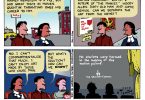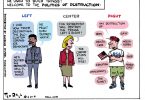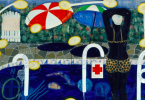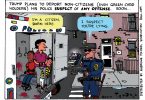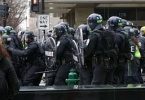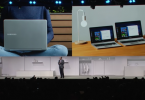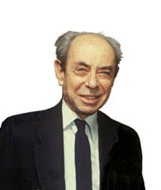 aNewDomain.net — A cardboard cutout of Dr. Frank Oppenheimer gazes through a window of the new, vastly expanded version of his dream, San Francisco’s Exploratorium. The pioneering experiential science museum will officially reopen April 17 on two piers “on the front porch of San Francisco,” as executive director Dennis Bartels puts it.
aNewDomain.net — A cardboard cutout of Dr. Frank Oppenheimer gazes through a window of the new, vastly expanded version of his dream, San Francisco’s Exploratorium. The pioneering experiential science museum will officially reopen April 17 on two piers “on the front porch of San Francisco,” as executive director Dennis Bartels puts it.
Oppenheimer, who helped his brother Dr. J. Robert Oppenheimer develop the atomic bomb at Los Alamos later took up the cause of science education. After being harassed by Sen. McCarthy’s Cold War thugs, he accepted a job as a science teacher, engaging his students by, for example, visiting a dump to collect parts for building science experiments.
The maker spirit with which Oppenheimer founded the Exploratorium in 1969 has morphed into the maker movement of today. And nowhere is that expressed better than at Exploratorium 2.0.
Dr. Frank would be proud.
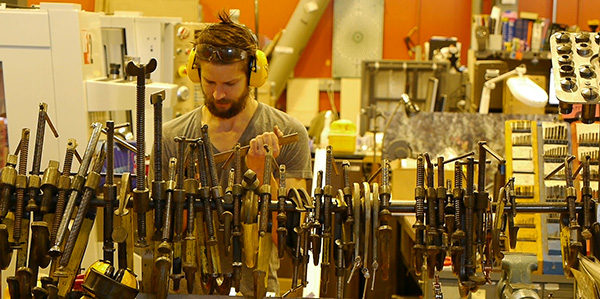 Above, the Workshop at San Francisco’s Exploratorium: Photos Russ Johnson
Above, the Workshop at San Francisco’s Exploratorium: Photos Russ Johnson
The inner workings of the museum are wide open. Watch inventors and builders perform their magic in an open shop. It’s just as you would watch chefs work in a restaurant’s open kitchen.
Even the building’s infrastructure is open. That includes the colorful plumbing that cools the building using San Francisco Bay water beneath the pier and heats it with a heat pump, sort of like a reverse air conditioner that blows heat in instead of out. Add a thousand kilowatts of solar energy panels on the roof and this might be, according to its architects, the largest Net Zero Energy Museum in the world. In other words, it generates as much power as it consumes.
For 43 years, the Exploratorium lived in a dark cavern at San Francisco’s Palace of Fine Arts. Now it has expanded to 330 thousand square feet on Piers 15 and 17 in San Francisco. It includes 600 indoor and outdoor exhibits, all engineered to generate enough ooh and ick power for grownups and kids alike.

I walk up behind a ten-year-old. He’s manipulating a joystick in front of a video screen. But instead of shooting up aliens, he controls a microscope. He’s viewing a sea urchin that’s about to use his hairy tentacles to cut off the early retirement plans of a wriggly shrimpy victim.
“Wow, cool!” the boy gasps. Everyone in the room whoops it up, tpo. We’re hollering yahoos at this real life one act play of sea life mayhem.
Nearby at an Explainer Station, staffers and volunteers are around to explain the various phenomena. A sign reads: Cow Eyeball Dissection: 2 PM. And there is a trash can nearby labeled For Eyeballs.
 Sunday ToDo List, Exploratorium Biology Lab
Sunday ToDo List, Exploratorium Biology Lab
The ick factor is at the biology exhibit, managed by a real working laboratory with real scientists in white coats who study Bay ecology and know how all this works.
There is a berth outside for ships from the the National Oceanic and Atmospheric Administration (NOAA) to dock. NOAA and the Exploratorium together developed the Wired Pier Project, which has placed sensors and instruments at the museum to gather data about the water, atmosphere, weather and biology of the San Francisco Bay.
Above all this hangs the Living Systems Gallery. It looks like a mid-century design chandelier comprised of colored tubes filled with cultured algae. A giant toppled Douglas Fir rests on the ground.
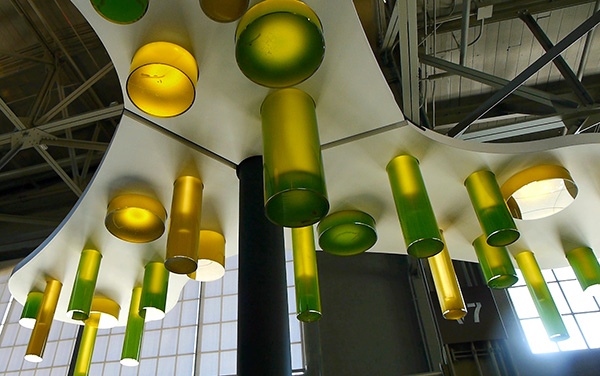
Outside, 1.5 acres of free-admission public space invites you to explore natural elements against a backdrop of the city beyond. A tall pole carries waving weather flags. They blow every which way, proving that the wind doesn’t necessarily come from one direction after all.
Take a walkway between two piers and let the San Francisco fog envelope you, even on a clear day. It is an installation of fog sculpture by artist Fujiko Nakaya.
Oppenheimer would be most proud of The Tinkering Studio, a tribute to him and the Maker Movement where, with guidance, you build, hack, create and experiment with everything from electrical circuits to food scraps and toys. Sometimes it gets a bit out of hand.
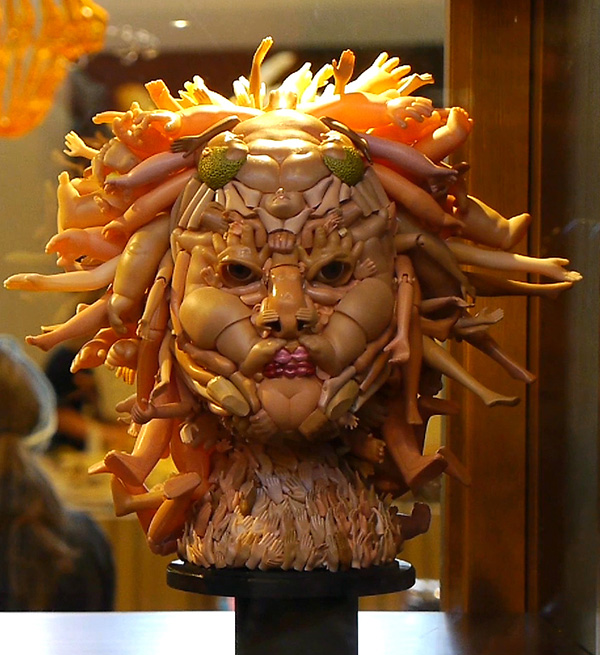 Medusa Head Made of Baby Doll Parts
Medusa Head Made of Baby Doll Parts
Nearby is perhaps the ultimate tribute to patience. It’s the City of San Francisco constructed, by artist Scott Weaver, with toothpicks. The project took 35 years.

On opening night, April 17, Pier 15’s facade will light up with its thermal energy wall, as projected next to the Exploratorium’s main entrance. Visitors will be able to check out their heat signatures as projected in large scale in real-time. It’s a symbol of what to expect inside.
General admission will cost $25 for adults, $19 for youth, and free for kids five and under with discounts for San Francisco Bay Area residents. Easily worth it.
In San Francisco for aNewDomain.net, I’m Russ Johnson.



